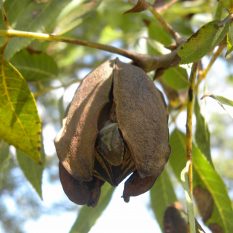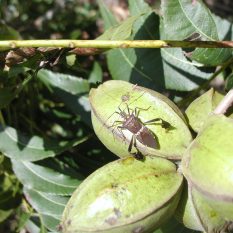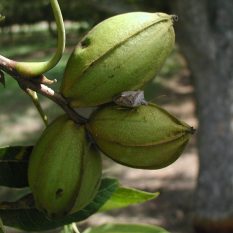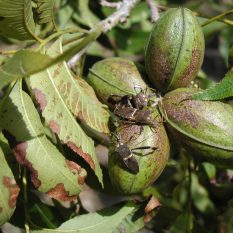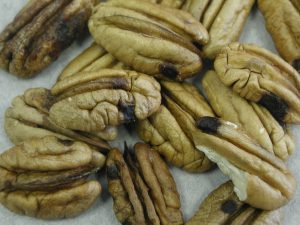Stink Bug Management: a challenge for all producers
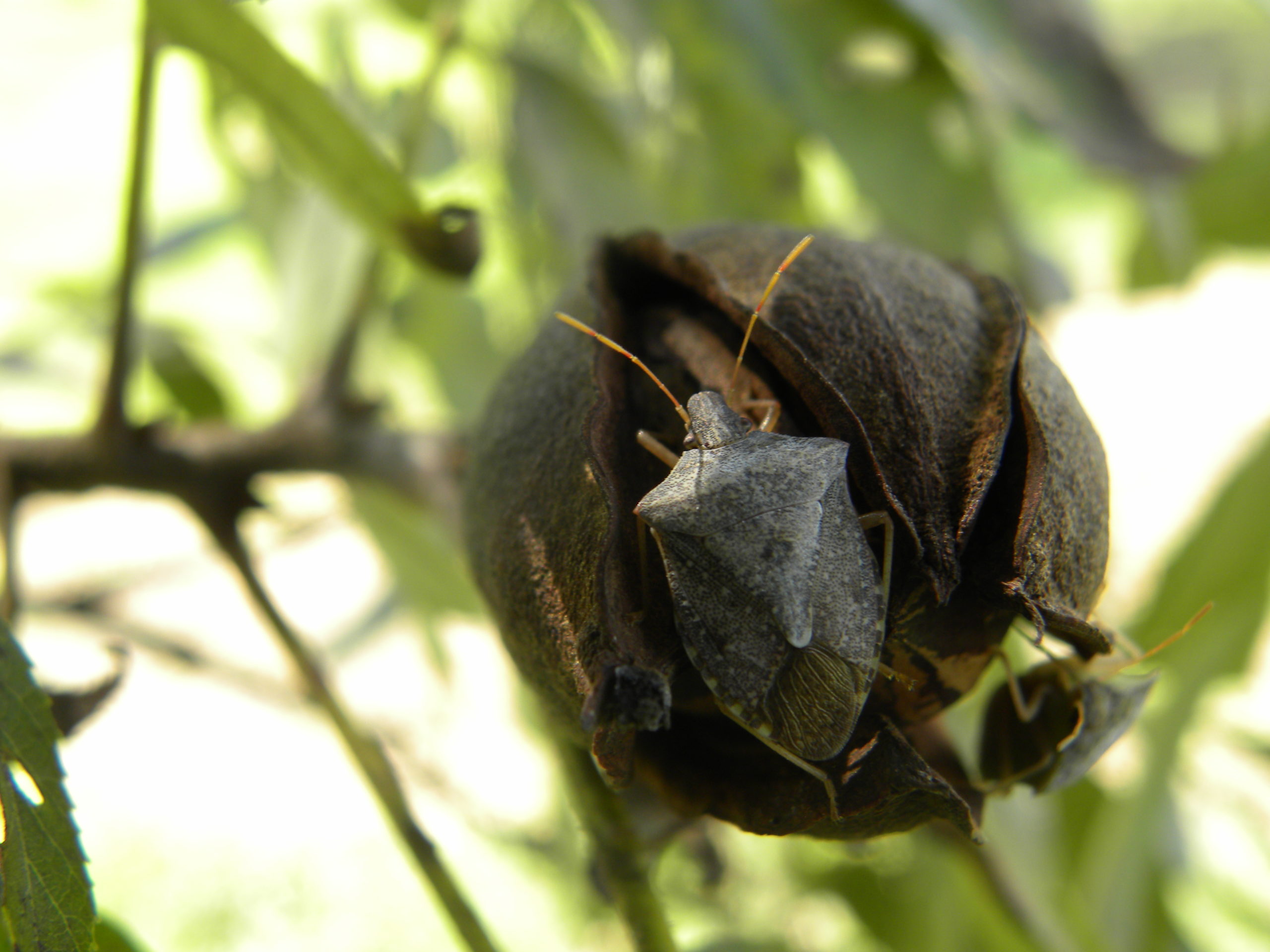
Stink bugs swarm a pecan cluster.
I don’t think there is anything more depressing and frustrating for a producer than to discover at harvest that they have some significant stink bug and leaffooted bug damage. Damaged pecans and kernels are harvestable pecans that producers have put a lot of money, time, and effort into producing. The tree expended energy to make these kernels, yet you don’t get paid for these pecans. And if selling in-shell retail, there is no way to separate damaged pecans from quality nuts.
But preventing damage and controlling stink bugs and leaf-footed bugs come with several difficulties that are centered on a number of factors. First off, there are no treatment thresholds. Growers also have difficulty scouting large trees. The obstacles continue to stack up from there. Damage can occur up to and during harvest, and lastly, these insects are strong fliers that can easily move into orchards from surrounding host plants. Given these management obstacles, producers need to investigate to fully understand which species are involved, where they come from, and what time they move into the orchard.
Kernel feeding, true stink bugs include the green stink bug, Chinavia hilaris (Say); southern green, Nezara viridula (L.); brown, Euschistus servus (Say); dusky, Euschists tristigmus, and Concheula, Chlorochroa ligata (Say). These true stink bugs do not reproduce on pecans, so adults have to move to surrounding areas. Also, we can add to this group the invasive brown marmorated stink bug, which has been observed in pecans in Georgia. In addition to the true stink bug group, there are also three species of leaf-footed bugs, Leptoglossus phyllopus, L. opposites, and L. zonatus, which also cause black spots on kernels.
The characteristic damage caused by this group will be nut drop during the water stage and black spots on kernels at harvest. Unfortunately, most producers do not realize the kernel damage until harvest. For producers that sell wholesale, this damage can result in a reduced price for the crop, and for those producers that retail, it can result in unhappy customers.
Although a difficult group to manage, there are several things that producers can do to combat these pests.
Manage orchard floor vegetation
Although stink bugs and leaffooted bugs are strong fliers and damaging populations can move into orchards during the late season from other host plants, it is still important to manage weeds and orchard floor vegetation to prevent population build-up within the orchard. I feel this is especially important for larger orchards. During the early season and mid-summer, it is easy to find the brown stink bug and the leaffooted bug L. phyllopus on Gaura parviflora (sometimes called Gaura, Lizard’s tail, or Velvet weed).
These insects also feed on a wide range of plants and utilize many different hosts during the season. In the book Stink Bugs of Economic Importance in America North of Mexico by J.E. McPherson and R.M. McPherson, over two hundred plants are listed as hosts for various stink bug species. With this in mind, we must be vigilant when managing our orchard floor and weeds.
Treat border rows
In some situations, producers can anticipate the movement of adults into an orchard, such as when row crops are harvested in the area. By treating the border rows with an insecticide, we can help suppress stink bug and leaffooted bug populations.
Use trap crops
Another option in combating stink bugs, trap cropping can provide some relief. Trap cropping is where an alternate desirable host plant is planted outside the orchard to draw adults away from pecans and into trap crop plots, then treated with an insecticide as needed. Various plants can be used as a trap crop. Some trap crops that work in Texas include purple hull peas, soybeans, and pearl millet. When using trap crops, the idea is to time the trap crop to be attractive just prior to and during the harvest season (August to October). However, there may be some exceptions to this. For example, if a field of early maturing soybeans that will be harvested in early August is near the orchard, then the planting of the trap crop will need to be timed so it is attractive at the time of the soybean harvest.
Select the proper insecticides
Insecticide selection for this pest complex will have to be one of the pyrethroid-based insecticides. When selecting insecticide, pay special attention to the pre-harvest interval or PHI. Since these insects can cause damage up to and during harvest, an insecticide’s PHI is important to determine before use. PHI’s for the various pyrethroid compounds can range from 21 days for bifenthrin to as close as three days for fenpropathin (Danitol). If livestock are grazing, neither of these products can be used, but the lambda-cyhalothrin base products do have a grazing clearance and a 14-day PHI.
Stink bug and leaffooted bug management is a challenge, but by learning the pest complex, their food hosts, and movement, you will have a better chance at preventing serious losses this harvest.

